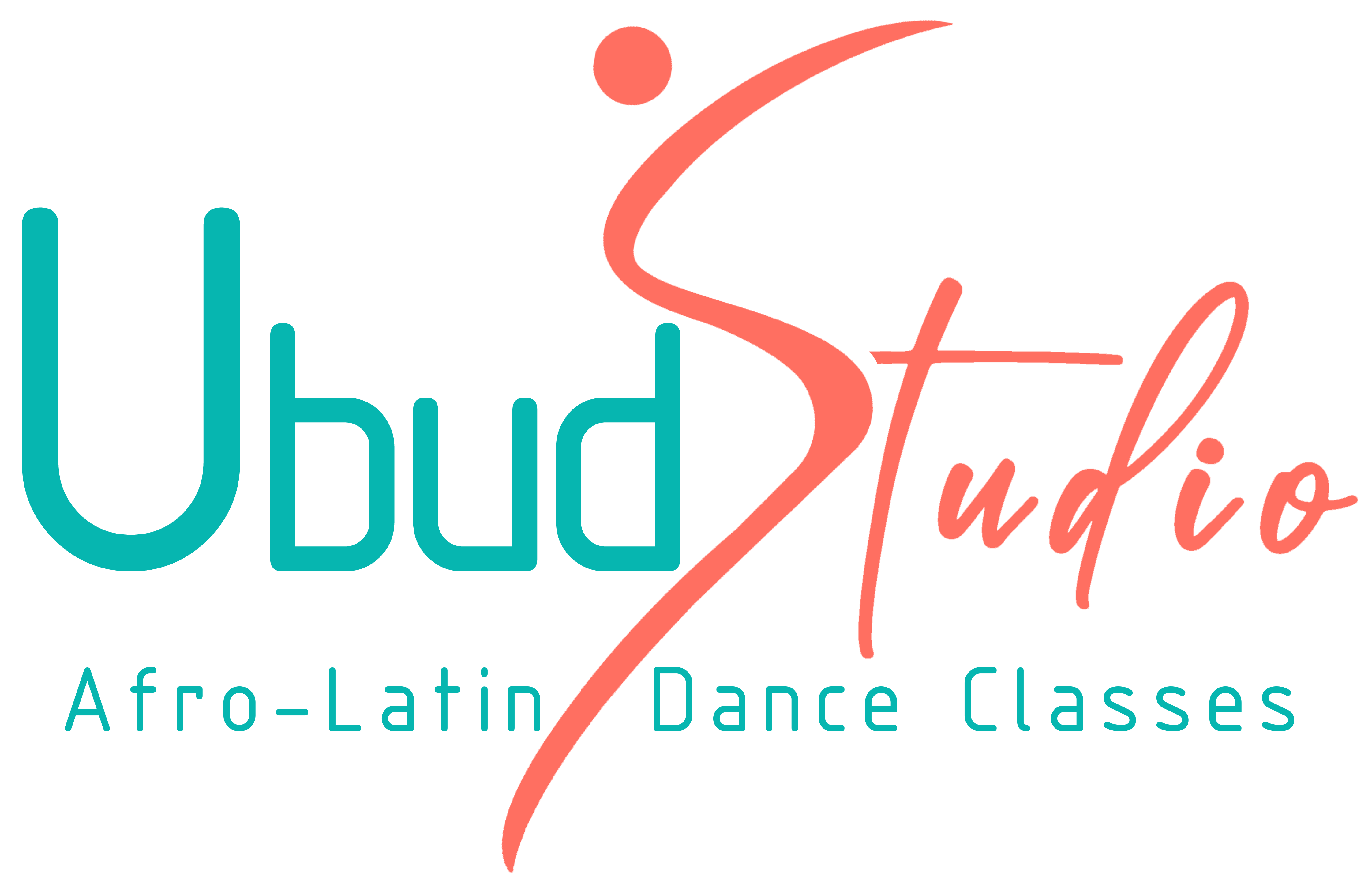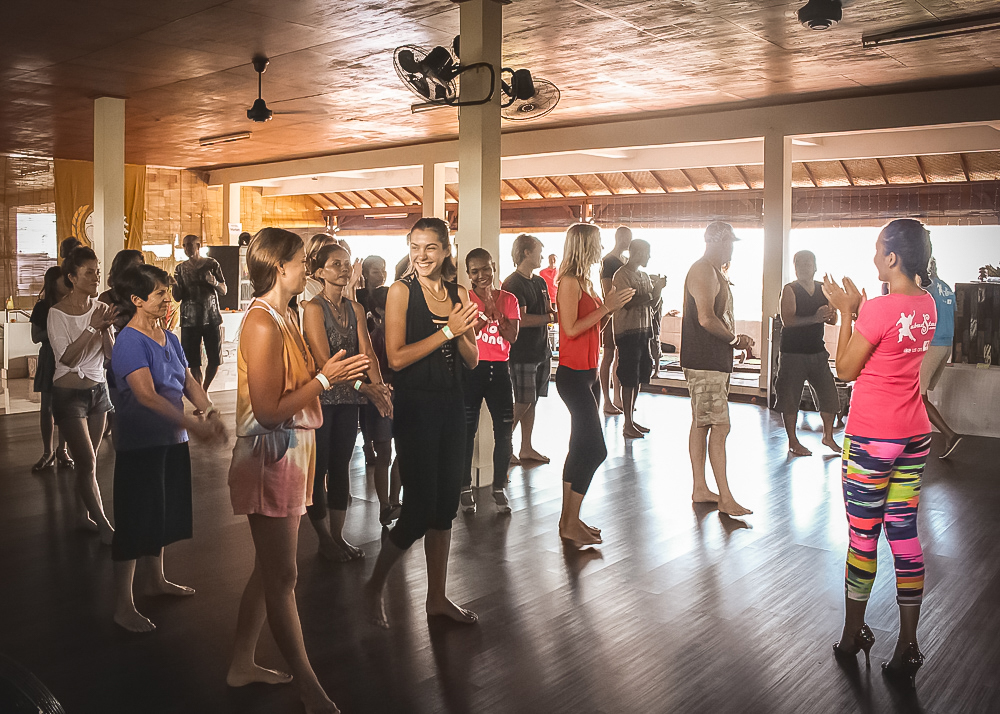WHAT IS SALSA?
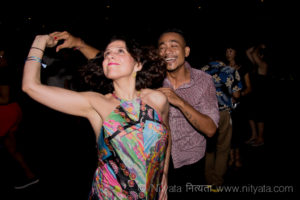 Salsa is a popular form of social dance that originated in the Caribbean. The movements of salsa have origins in Puerto Rican bomba and plena, Cuban Son, cha-cha-cha, mambo and other dance forms. The dance, along with salsa music, originated in the mid-1970s in New York. Different regions of Latin America and the United States have distinct salsa styles of their own, such as Cuban, Puerto Rican, Cali Colombia, L.A. and New York styles. Salsa dance socials are commonly held in night clubs, bars, ballrooms, restaurants, and outside, especially when part of an outdoor festival.
Salsa is a popular form of social dance that originated in the Caribbean. The movements of salsa have origins in Puerto Rican bomba and plena, Cuban Son, cha-cha-cha, mambo and other dance forms. The dance, along with salsa music, originated in the mid-1970s in New York. Different regions of Latin America and the United States have distinct salsa styles of their own, such as Cuban, Puerto Rican, Cali Colombia, L.A. and New York styles. Salsa dance socials are commonly held in night clubs, bars, ballrooms, restaurants, and outside, especially when part of an outdoor festival.
In many styles of salsa dancing, as a dancer shifts their weight by stepping, the upper body remains level and nearly unaffected by the weight changes. Weight shifts cause the hips to move. Arm and shoulder movements are also incorporated. Salsa generally uses music ranging from about 150 bpm (beats per minute) to around 250 bpm, although most dancing is done to music somewhere between 160–220 bpm. The basic Salsa dance rhythm consists of taking three steps for every four beats of music. The odd number of steps creates the syncopation inherent to Salsa dancing and ensures that it takes 8 beats of music to loop back to a new sequence of steps.
What style of Salsa do we teach at Ubud Studio?
L.A. Style Salsa
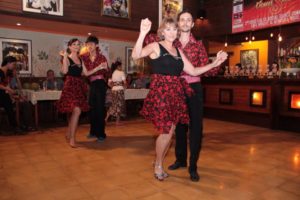 The Los Angeles salsa style (L.A. style) is danced strictly on 1, in a line, using elements of various North American and stage dances. This helps prevent dancers from hitting other couples on a crowded dance floor. It is strongly influenced by the Latin Hustle, Swing, Argentine Tango and Latin Ballroom dancing styles. LA style places strong emphasis on sensuousness, theatricality and acrobatics. The lifts, stunts and aerial works of today’s salsa shows are derived mostly from L.A. style forms with origins in Latin Ballroom and Ballet lifts.
The Los Angeles salsa style (L.A. style) is danced strictly on 1, in a line, using elements of various North American and stage dances. This helps prevent dancers from hitting other couples on a crowded dance floor. It is strongly influenced by the Latin Hustle, Swing, Argentine Tango and Latin Ballroom dancing styles. LA style places strong emphasis on sensuousness, theatricality and acrobatics. The lifts, stunts and aerial works of today’s salsa shows are derived mostly from L.A. style forms with origins in Latin Ballroom and Ballet lifts.
The two essential elements of this dance are the forward–backward basic step and the cross-body lead. In this pattern, the leader steps forward on 1, steps to the right on 2-3 while turning 90 degrees counter-clockwise (facing to the left), leaving the slot open. The follower then steps straight forward on 5-6 and turns on 7-8, while the leader makes another 90 degrees counter-clockwise and slightly forward, coming back into the slot. After these 8 counts, the leader and follower have exchanged their positions.
Albert Torres, Laura Canellias, Joe Cassini, Francisco and Luis Vazquez, and Rogelio Moreno are credited for the early development and growth of LA Style. Later dancers such as Alex Da Silva, Edie Lewis, Joby Martinez, Josie Neglia, Katia Vaz, and Johnny Vazquez are often credited with developing the L.A. style of dancing as we know it today.
Ubud Studio offers you 2 beginners (initiation), 2 intermediate level1 and 1 intermediate level2 class per week. Please have a look at our schedule here, follow this link: SALSA SCHEDULE
Rueda de Casino
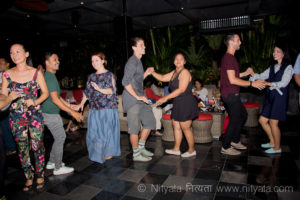 Rueda de Casino (Rueda) is a particular type of Salsa round dance, born from Casino. People incorrectly call it “Casino Rueda” or “Cuban Salsa.” The origins of the name Casino are the casinos deportivos, the dance halls where a lot of social dancing was done among the affluent, white Cubans during the mid-20th century and onward. Casino danced with multiple partners in a circular fashion emerged in 1956 under the name “Rueda del Casino,” and has become a popular dance throughout the world.
Rueda de Casino (Rueda) is a particular type of Salsa round dance, born from Casino. People incorrectly call it “Casino Rueda” or “Cuban Salsa.” The origins of the name Casino are the casinos deportivos, the dance halls where a lot of social dancing was done among the affluent, white Cubans during the mid-20th century and onward. Casino danced with multiple partners in a circular fashion emerged in 1956 under the name “Rueda del Casino,” and has become a popular dance throughout the world.
Pairs of dancers form a circle, with dance moves called out by one person, a caller (or “líder” or “cantante” in Spanish). Many moves have hand signs to complement the calls; these are useful in noisy venues, where spoken calls might not be easily heard. Most moves involve the swapping of partners, where the partners move around the circle to the next partner. The combination of elaborate dance combinations and constant movement of partners create a visually spectacular effect.
The names of the moves are mostly in Spanish, some in English (or Spanglish; e.g., “un fly”). Some names are known in slightly different versions, easily recognizable by Spanish-speaking dancers, but may be confusing to the rest. Although the names of most calls are presently the same across the board, the different towns in Cuba use their own calls. This is because the pioneers of Rueda de Casino wanted to keep others from participating in their Rueda. Many local variations of the calls can now be found. They can change from town-to-town or even from teacher-to-teacher. There are many different variations of moves in Rueda de Casino.
Some of the most common moves in Rueda include: Dame, Enchufle and Sombrero. You can readily find an extensive list of Rueda de Casino moves in various websites. There are different hand motions that the caller can signal in case one’s voice cannot be heard over the loud music. For example, the hand signal for Sombrero is the caller tapping the top of his or her head.
We are usually teaching Rueda on Sundays for our now very famous donation-based community class (everyone is welcome to join), please follow us on Facebook to get the updates on our Sundays schedules. Follow this link to our page: Ubud Studio Facebook
